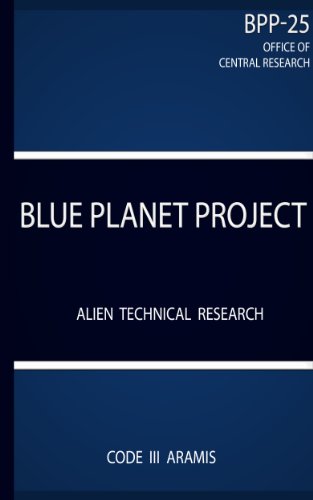The term “chemtrails” has been a subject of heated debate among conspiracy theorists, scientists, and environmentalists. A subset of individuals firmly believes that the unusual weather patterns we’re experiencing are directly linked to chemtrails, which are allegedly laced with chemicals by unknown entities for purposes ranging from weather modification to population control.
Understanding Chemtrails
Chemtrails, a portmanteau of “chemical” and “trails,” refers to the long-lasting trails left by planes in the sky. Unlike contrails, which are water vapor condensation from aircraft engines, chemtrails are theorized to contain chemical or biological agents.
Evidence Linking Chemtrails to Weather Changes
- Eyewitness Accounts: Numerous individuals have reported seeing planes leaving unusually persistent trails that spread and linger for hours.
- Weather Anomalies: Coinciding with these sightings are reports of unseasonal weather patterns, including sudden temperature drops and unusual storm formations.
- Testimonials from Industry Insiders: Some whistleblowers from aviation and environmental fields have hinted at a clandestine operation involving atmospheric spraying.
Theories Behind Chemtrails
- Climate Engineering: Some believe that chemtrails are part of a secret large-scale atmospheric program to combat global warming.
- Population Control: Another theory suggests these chemicals are used to manipulate human health and control population growth.
- Psychological Manipulation: There’s also a belief that these chemicals could affect human psychology, altering mood and behavior.
Impact of Chemtrails on Environment and Health
- Ecological Disruption: The alleged chemicals could potentially disrupt ecosystems, affecting wildlife and plant life.
- Human Health Concerns: Respiratory issues and other health problems are often attributed to long-term exposure to these chemical trails.
Exploring the Chemical Composition of Chemtrails
While the exact composition of chemtrails, if they indeed differ from ordinary contrails, remains a subject of speculation and debate, several theories propose a range of substances that might be used. Here’s a closer look at the purported chemicals and their potential impacts.
Theorized Chemicals in Chemtrails
- Aluminum Oxide Particles: Aluminum is often mentioned in chemtrail discussions. Proponents of the chemtrail theory suggest that aluminum oxide particles could be used for geoengineering purposes, reflecting sunlight away from the Earth to combat global warming. However, excessive aluminum in the environment could potentially harm ecosystems, infiltrating soil and water sources.
- Barium Salts: Barium is another substance frequently associated with chemtrails. It’s theorized that barium could be used for atmospheric mapping and radar enhancement. However, high levels of barium exposure are known to negatively impact human health, particularly affecting the heart and respiratory system.
- Strontium: Some conspiracy theories include strontium as a component of chemtrails. Strontium has various industrial uses, but its presence in the atmosphere could lead to health issues, including bone disorders, as it mimics calcium in the human body.
- Biological Agents: There are claims that chemtrails might contain biological substances, possibly for population control or as part of biowarfare experiments. The exact nature of these alleged biological agents varies widely across different theories.
- Other Chemicals: Theories also extend to include a range of other chemicals, from silver iodide (used in cloud seeding) to unknown and unidentifiable substances that some believe could be experimental.
Impact of These Chemicals
- Environmental Concerns: The introduction of heavy metals and other chemicals into the atmosphere could have unforeseen ecological impacts, potentially affecting water sources, soil quality, and overall biodiversity.
- Health Implications: Chronic exposure to some of these substances, particularly heavy metals like aluminum and barium, could lead to a range of health issues in humans, including neurological disorders and respiratory problems.
- Climate and Weather Effects: If used for geoengineering, these substances might alter weather patterns, potentially leading to more extreme weather events or disrupting natural climate cycles.
The Need for Transparency and Research
Given the potentially significant implications for both human health and the environment, there is a growing call among some groups for greater transparency regarding aerial spraying activities and more rigorous scientific investigation into the matter.
Conclusion
The link between chemtrails and erratic weather patterns remains a topic of debate. While concrete evidence is scarce, the number of eyewitness accounts and insider testimonials cannot be ignored. The quest for truth in this matter is an ongoing journey, filled with controversies and intrigue.
The debate over the composition and purpose of chemtrails continues to stir controversy. Without concrete evidence or official acknowledgment, the discussion remains largely in the realm of theory and speculation. However, the persistent concerns raised about the possible environmental and health impacts of these alleged aerial activities highlight the need for more open dialogue and research in this area.
FAQs
- What’s the difference between chemtrails and contrails? Contrails are water vapor condensations, while chemtrails are theorized to contain chemicals.
- Are there any scientific studies supporting the chemtrail theory? Mainstream science largely dismisses the theory, but independent researchers are calling for more investigations.
- How can I identify a chemtrail? Chemtrails are characterized by their persistence in the sky, spreading out and lingering for hours.
External Links for Further Reading
- Chemtrail Testimonials: First-hand accounts and whistleblower testimonies.
- Weather Anomalies & Chemtrails: Discussions on unusual weather patterns coinciding with chemtrail sightings.
- Chemtrail Health Concerns: Investigating the potential health risks associated with chemtrails.


